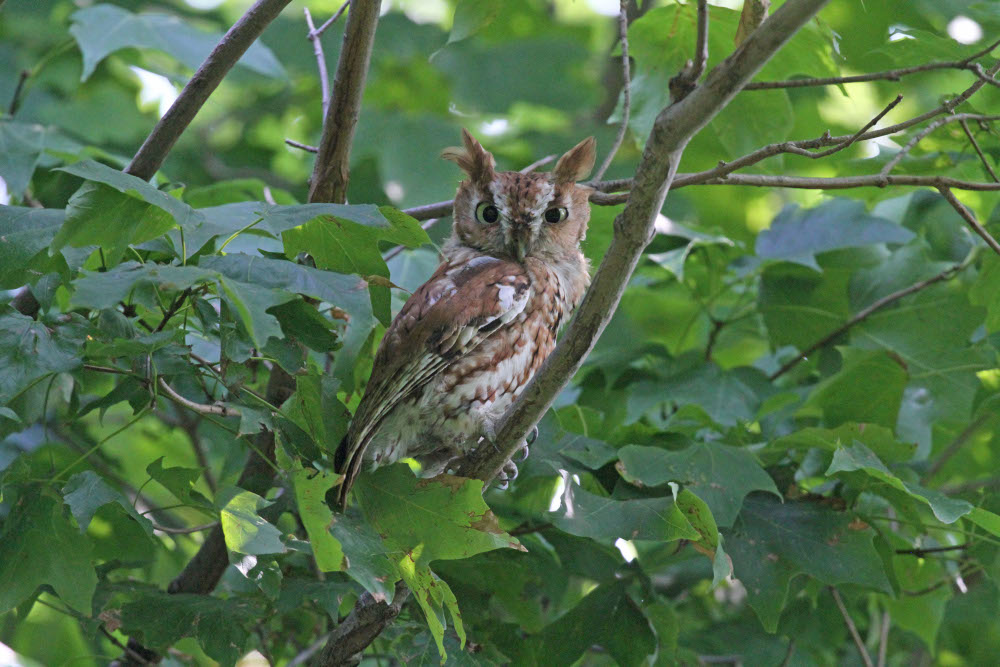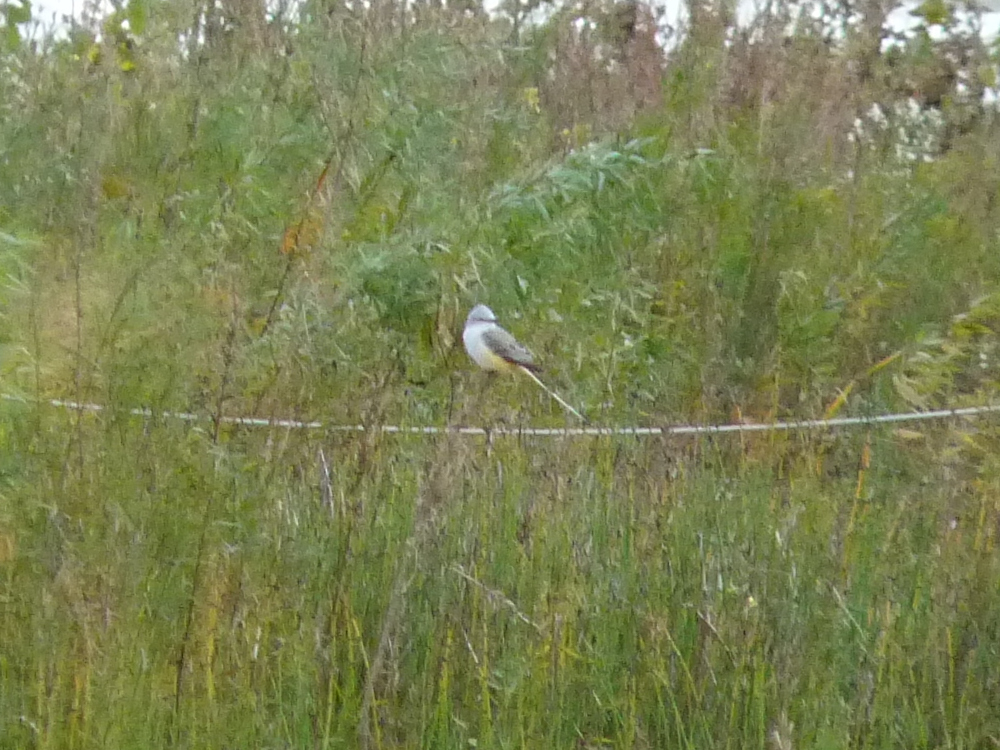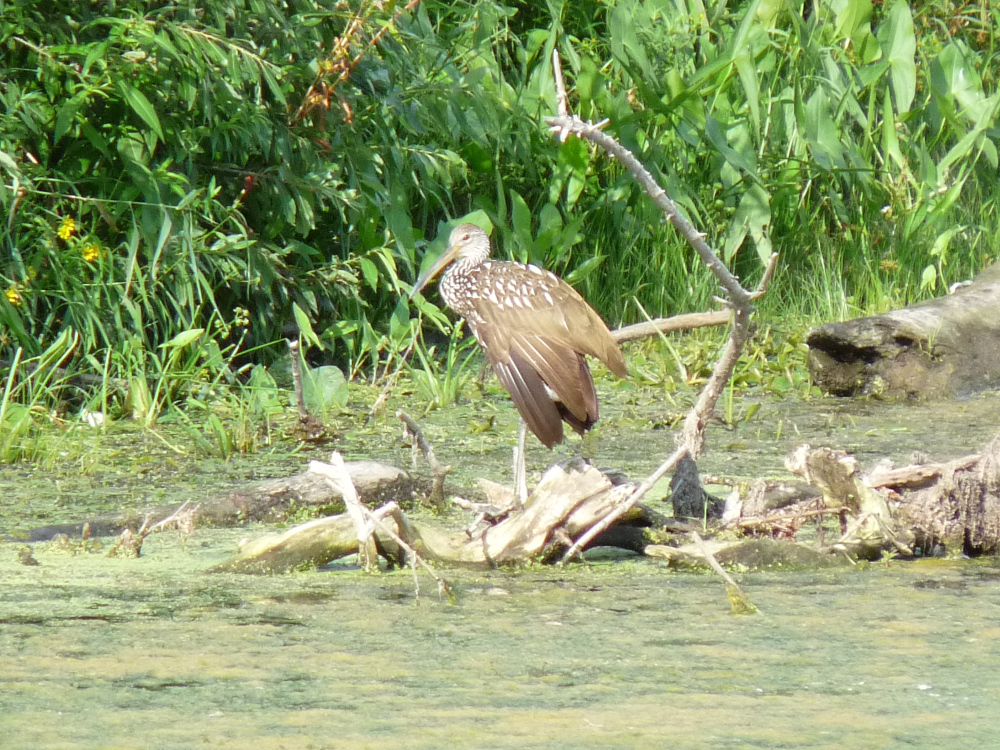November is known for rare waterbirds but it’s also excellent for owls. Long-eared, Short-eared, Snowy, and Northern Saw-whet Owls have been reported at Montrose as of November 12. So, while you’re dreaming about alcids and waiting for a Black-legged Kittiwake to fly by, don’t forget to check the Dunes, woods, and shrubs for owls. Look for whitewash, listen for complaining songbirds, and scan open areas for round white lumps.
Ferruginous Hawk – An Unexpected First Record For Montrose, November 6, 2023
A list of the next ten or twenty new species for Montrose might include a buteo like a Broad-winged Hawk but probably not Ferruginous Hawk. On November 6 the improbable happened and a juvenile dark morph Ferruginous Hawk flew over Montrose Point. Dark morph buteos can be tricky to identify but diagnostic photos taken by an attentive birder confirmed the identification. The bird drifted down the beach and off to the west before disappearing, though it was seen and photographed the next day at the Shedd Aquarium in Chicago. Ferruginous Hawk is a very rare visitor to Illinois from the western United States and southwestern Canada. This is the 351st species for Montrose, and yet we still don’t have a verified Broad-winged Hawk.
Scissor-tailed Flycatcher, October 14 &15, 2023
October is an excellent month for rarities in Illinois. In keeping with this historical tendency, a Scissor-tailed Flycatcher was discovered at Montrose on October 14 and refound on October 15. The bird moved around quite a bit and proved challenging to pin down, but spent enough time in the Dunes to delight the dozens of people who came to look for it. This sighting represents about the fifth Scissor-tailed Flycatcher record for Montrose. Also of note is that Montrose has 15 flycatcher species to its credit, maybe the highest total for any location in Illinois.
Limpkin (but not at Montrose), September 10, 2023
I finally caught up with the Chicago Botanic Garden Limpkin after missing it last weekend and probably walking right by it three weeks ago. The Botanic Garden bird first showed up nearby in the Skokie Lagoons but made its way to the swampy area at the south end of the Botanic Garden and stayed there, gorging on sandwich-sized clams (the spent clam shells are obvious on the bank where the bird has been hanging around). Limpkins are found in wetlands throughout the American tropics and are also common in Florida. The last few years have seen an explosion of them in the eastern United States outside their normal range, with records as far north as southern Canada and as far west as Colorado (from eBird). The Botanic Garden bird is the fourth or fifth Limpkin record for Illinois, the first coming just four years ago in 2019.
Limpkin is a strange, primeval looking bird. As a point of reference, it’s related to cranes and rails, so if you’re familiar with Sandhill Crane or American Coot you’re in the right group of birds. When I see one it always reminds me of a small crane. An interesting tidbit about Limpkin is that its distinctive wailing call is sometimes used as a sound effect in movies. As an example, the scene in “The Godfather: Part 2” where Fredo gets whacked has a Limpkin calling in the background. Obviously the call was added in since there aren’t any Limpkins at Lake Tahoe where the scene was filmed.
What are the chances a Limpkin will show up at Montrose? Pretty slim I’d say. Montrose doesn’t have any marsh or wetland habitat that would be attractive to a Limpkin, and all of the Illinois records have been in this type of habitat. More important than just habitat is that Illinois Limpkin locations have hosted numbers of large mollusks like snails and clams that the birds have been feeding on. Our only chance would be a flyby, so brush up on Limpkin flight identification.
Eastern Screech-Owl, August 8, 2023 – First Record For Montrose

Eastern Screech-Owl from Montrose. Photo courtesy of Geoff Williamson (click to see the larger version)
Howard Blum and Terry Walsh found a red morph Eastern Screech-Owl on August 8. Hard to believe but this is the first verified Eastern Screech-Owl record for Montrose Point. Montrose boasts a long list of birds, a list that includes first and second state records as well as many other rare and unexpected species. Eastern Screech-Owl is a common and widespread bird in Illinois, including the Chicago area, but for unknown reasons it went unrecorded at Montrose until Howard and Terry found the August 8 bird. The total number of birds seen at Montrose now stands at 350.
Related Resources
Buff-breasted Sandpiper and Other Shorebirds, August 5, 2023
An adult Buff-breasted Sandpiper graced Montrose Beach on the morning of August 5. This meager photo doesn’t do the experience justice as the bird walked close to the people fortunate enough to be there. Adult is the rarer of the two Buffy age classes we see; most are juveniles that show up later in August and early September. We also had adult Baird’s and Western Sandpipers, the later a rare bird and even rarer age class at Montrose. August is the best month for shorebirds for us, with the peak occuring later in the month. Try to visit the beach as often as possible, including later in the afternoon and evening.



